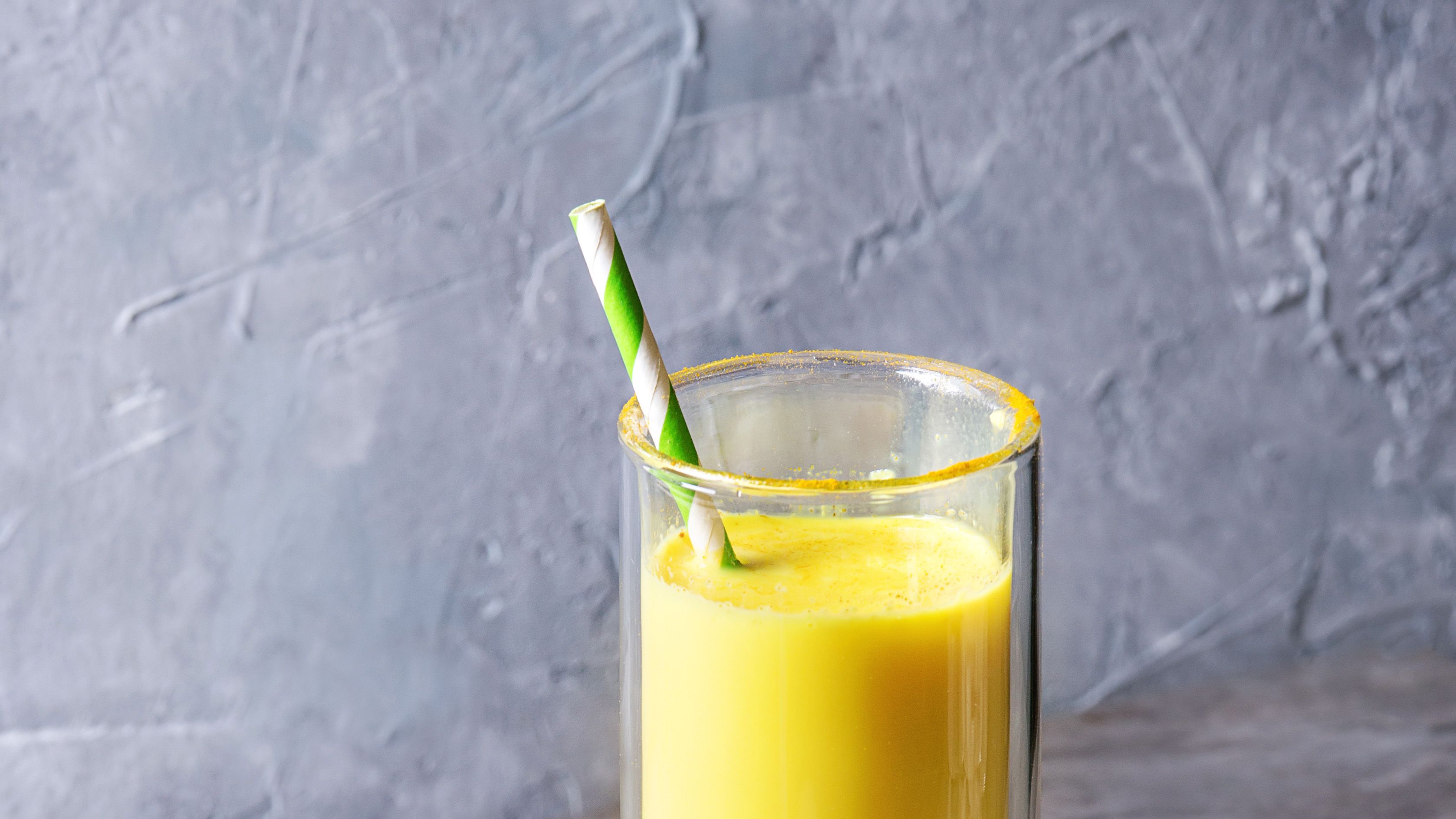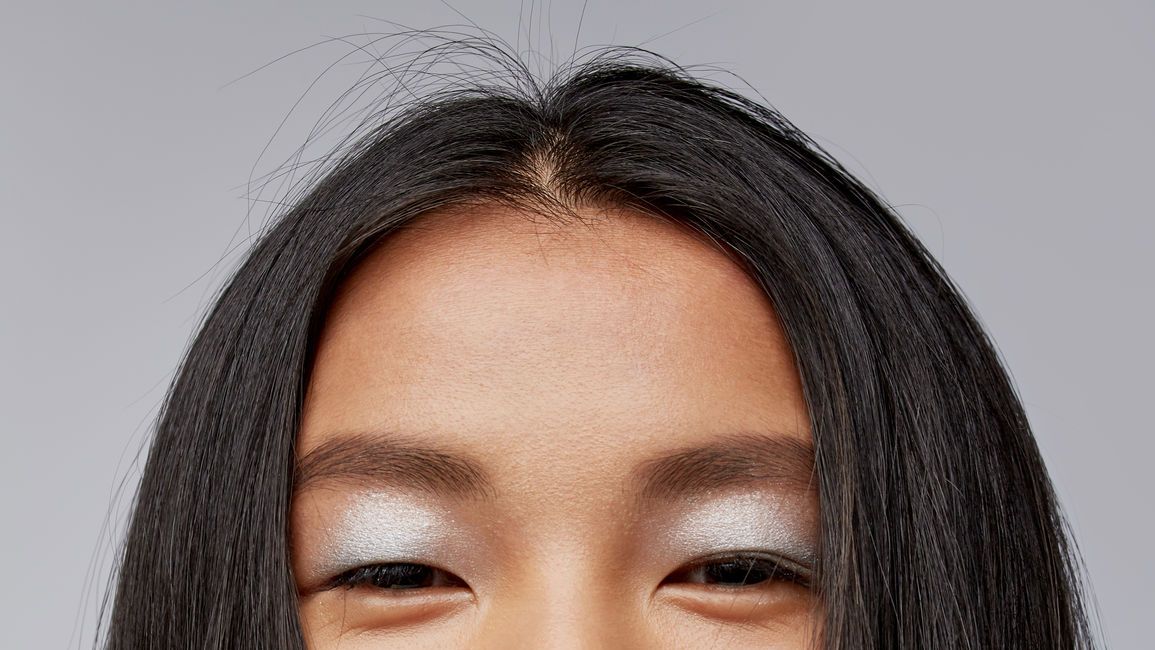How Ayurveda Helped Me Rediscover My Indian Heritage
I resisted the centuries-old Ayurvedic beauty rituals of my youth, until the world’s embrace of them ignited a newfound appreciation.
Me: “My skin is itchy. Look, I have a rash.”
My mother: “Here’s some mustard oil. Just massage it on.”
Me: “I’m not feeling well. My insides are twisting.”
Mother: “Drink some turmeric milk and you’ll be fine by dinnertime.”
Me: “My hair is always frizzy!”
Mother: “That’s because you refuse to let me put coconut oil on it.”
Coconut oil. Mustard oil. Turmeric. These staples have been part of the Ayurvedic system of healing for centuries, and my mother prescribed them for everything from unruly hair to dry skin and acne, with zero concern for the messy applications and the fact that she was turning her daughter into a human oil slick. And while my grandmother could usually be counted on to contradict everything my mother said, when it came to the curative powers of these ingredients, she stood firmly by her daughter.
Get exclusive access to fashion and beauty trends, hot-off-the-press celebrity news, and more.
Our family split its time between Stockholm and New Delhi, but no matter where we were, my mother would come to me every Sunday to pour a bowlful of coconut oil onto my scalp and rub it in vigorously as it dripped over my face and body. I’d spend the rest of the day carrying around tissues to mop up the excess oil I left behind wherever I went. And after I washed it out the next morning, she’d comb in a little more as a protective measure. By my teens, I had grown tall and lanky and had enough trouble fitting in with my peers, so I started to hide from my mother to avoid her weekly treatments. She said the coconut oil would nourish my scalp, bring down frizz, and prevent breakage, but I just couldn’t risk having my hair plastered to my head for days afterward.
I didn’t mind summers so much, since the hot afternoons meant body massages with sandalwood or jasmine oil. Their textures were light, they cooled my skin and relieved the itchiness and dryness caused by sunburns, and their beautiful scents lingered for days. Winters, however, brought the dreaded mustard oil, which was “warming.” Sure, rubbing it on could boost blood circulation, flush out toxins, and nourish the skin, but it had a strong, spicy aroma that forced me into self-imposed social isolation. Who wants to be known as the girl who smells like curry?
That was Indian beauty for me. Some parts I loved; others I couldn’t wait to get away from. I knew the traditional Ayurvedic way of making kajal was precious: Slowly burn ghee (clarified butter) in an oil lamp, collect the soot in a silver bowl, then mix it with almond oil. The charcoal-colored pigment wasn’t just for dressing up the eyes; it also soothed and protected them from infections. But kajal took almost the whole day to make. Buying an eyeliner from L’Oréal was so much simpler.
Then there was shata-dhauta-ghrita, or ghee “washed” 100 times. To make it, you’d place equal parts ghee and purified water in a copper bowl, whisk them together for three minutes with a copper spoon, then drain the water by passing the mixture through a sieve. Repeat the process 99 more times (really!) and you’d have the world’s best moisturizer: nongreasy, light as whipped cream, and unbelievably effective for treating dry skin, eczema, rosacea, acne, and sun damage. But can you imagine how long it took to brew up a batch?

The author at her wedding.
In my 20s, when I landed a job in New Delhi as a beauty editor at a glossy fashion magazine, I quickly swapped out the kitchen-shelf tinctures and treatments for pretty store-bought masks and moisturizers. I learned about retinoids, lactic acid, and antioxidants and started to value these ingredients and their scientifically proven claims over my mother and grandmother’s homegrown recipes based on ancient Ayurvedic texts.
It’s not that I was rejecting my Indian heritage. In fact, when I got married at 29, I had no problem trading in my slinky LBD for a bright-red Rajasthani lehenga skirt that weighed 41 pounds. But I told my mother there would be no turmeric touching any part of my body. That was a major problem, as the yellow root anchors an entire prewedding ritual in which relatives slather the bride with turmeric paste to keep her skin smooth, soft, and glowing. And that’s just the outward manifestation. According to Ayurveda, turmeric, or haldi, as we call it, is a complete tenet in itself: Yellow is the color of good luck in India, and it does more than nourish the skin; it also purifies the soul and is associated with new beginnings, health, peace, and happiness. Traditionally, the prewedding haldi ritual goes on for seven days, but my mother asked for just one. I went to the dermatologist for a facial instead.
But about five years ago, Ayurveda started making a name for itself on the international stage. As I walked the beauty aisles of Sephora and Bergdorf Goodman in New York and Harrods and Selfridges in London, I began to see beautifully packaged oils, serums, and shampoos laced with Indian ingredients. Coconut oil, mustard oil, and turmeric—as well as neem oil (extracted from the evergreen neem tree that grows in India), almonds, vetiver, kokum butter (derived from a mangosteen-like fruit), hibiscus flowers, and saffron—were no longer confined to kitchen shelves. They were rapidly becoming a part of the mainstream beauty vocabulary.
This forced me to take a closer look. The textures of my childhood treatments had been coarse and heavy, but these modern formulations were elegant and lightweight. Rather than layering skin with the scent of curry and incense sticks, they were fragranced with the notes of tuberose and sandalwood. Modern chemistry helped turn medicinal treatments steeped in Indian history into sublime sensory experiences.

'Golden milk beverages (made with turmeric) are becoming increasingly popular.
Instead of spending hours to extract the oil from coriander seeds, I could pick up Kiehl’s Midnight Recovery Concentrate or Aesop Coriander Seed Body Cleanser to get the delicate herbal scent and antioxidant powers right off the shelves. If I wanted the powers of turmeric without staining my skin, I could reach for Clarins Double Serum. Then there was the time the Internet exploded with positive reviews of Vicco Turmeric Skin Cream, a turmeric-and-sandalwood-oil formulation that has been around in India since the 1950s. It had been the bane of my childhood, but there it was being touted by international beauty mavens.
Things came full circle on a recent visit to London when I walked into a Starbucks on Tottenham Court Road and saw a turmeric latte front and center. It triggered an almost genetically encoded memory: My mother, like many women in India, drank liberal amounts of golden milk while she was pregnant because the beverage—essentially warm milk mixed with turmeric and a dash of pepper—was supposed to give her unborn child a flawless complexion. Throughout my life, she continued to dose me with turmeric concoctions whenever I had a cold, a toothache, cramps, or acne. Most days, I dumped the drink down the drain, but now, here I was, about to pay $6 for the privilege of sipping it.
And Indian classics aren’t just trendy—they’re effective. Turmeric is antioxidant and antimicrobial, mustard oil is rich in moisturizing fatty acids, and vitamin-E-packed coconut oil is easily absorbed by skin and hair. Research shows that shata-dhauta-ghrita is anti-inflammatory and moisturizing and can help treat scars. And for those worried about lab-made chemicals, Ayurveda is as all-natural as it gets, fitting in nicely with the current shift toward a holistic approach to beauty. We now know, for example, that treating surface issues such as dry hair and blemishes often needs to begin with a closer look at our insides and what we’re eating and how we’re living. Indian beauty, rather than being dusty and outmoded, seems to have been ahead of the curve—and I’m happy to admit I was wrong all those years ago.
Today, I massage coconut oil into my scalp before shampooing, use multani mitti masks (made with fuller’s earth, a type of bentonite-rich clay) to detox my skin, and carry a tiny vial of pure sandalwood oil to dab on throughout the day. When my complexion feels itchy, on goes a product with ghee or maybe some honey. And much to my mother’s amusement, when she sprained her ankle recently, I filled a huge tumbler with golden milk and told her to drink up.
This story appears in the May 2019 issue of Marie Claire.
RELATED STORY

19 All-Natural Makeup Brands With Products That Really Deliver